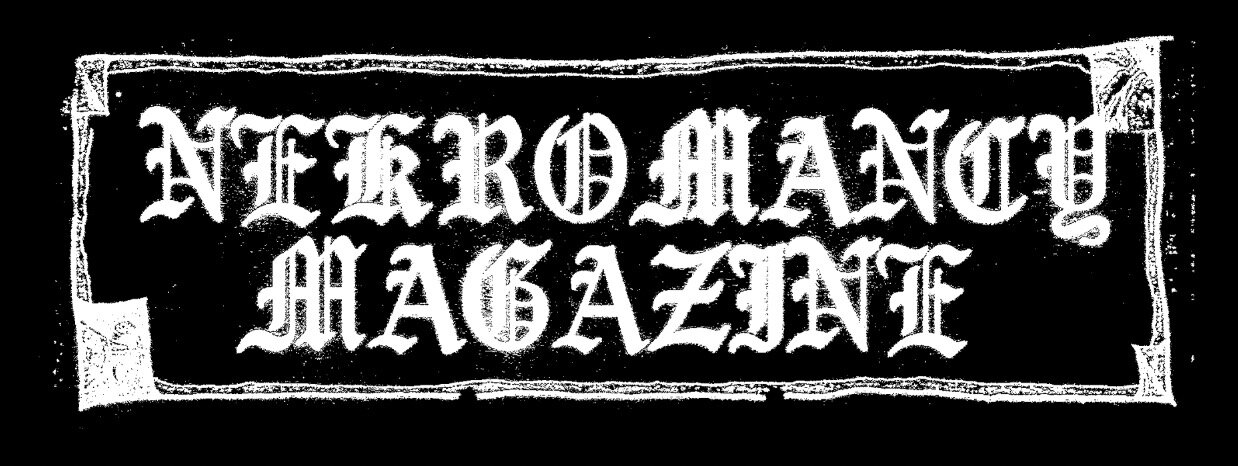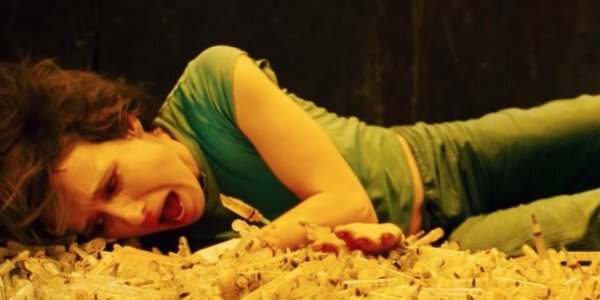Trap House?: An Ode to the Saw Franchise and Growing Up Emo
March 19, 2021 ● Emma Doyle
Lionsgate Films
I have limited pre-secondary school memories from growing up in the grey-washed South-West of England. On a day-to-day basis, the cultural enrichment received from my local surroundings, though adequate, struggled to transcend beyond the uninspiring. Intermittent returns to the concrete countryside offer a detached comfort, the kind that invariably appeals to those with a vested interest in the activities of the Neighbourhood Watch or the suburban housing market. The formation of any kind of pronounced identity became the responsibility of the media my school peers and I avidly consumed. In a typical instance, there were approximately four stereotypes that pre-teens had a predetermination to conform to. Having bought one Rihanna album, to find regrettably that I couldn’t relate to a single lyrical message, mainstream acceptability was crossed off my metaphorical list. This left me three viable avenues, though neither premature Dark Fruits football hooligan nor saccharine pop sympathiser were models I particularly aligned with. I required darker subject matter to exchange for my veritable lack of personality, and, as many did towards the end of the early 2000s, found a pre-carved niche for myself in the recesses of emo culture.
This leads me unswervingly to my main argument; there was no franchise more appropriately targeted, nor befitting, to the burgeoning international emo scene than Saw. I can’t say that I have a concise idea of how James Wan and Leigh Whannel managed to make what early critics labelled as “torture porn” marketable to the masses with their 2004 debut, but manage it they did. At five years old, I was not, of course, a seasoned connoisseur of the violent slasher. But my interest was piqued following a brief viewing of a TV trailer which provided a slightly more than brutal contrast to the ordinary visual scenes of Rugrats or Arthur the questionably talking aardvark. I was sure I was terrified. Equally, there was an acute morbid curiosity lurking beneath my standard consciousness, which I had already been exploring through the increasing savagery of the stage-deaths I subjected my Barbie and Polly Pocket dolls to as a recreational hobby. House fires, earthquakes and regular drownings-by-plane-crash in the bathroom sink were my methods of choice, as well as on one occasion a heavily Saw-inspired face transplant which required the deployment of some blunt classroom scissors and expert precision. Despite this alarming admission, please know that I had a wonderfully easy-going childhood, and experienced far greater happiness than my mother when confronted by her water bill following this short-lived phase.
Cary Elwes in Saw (2004), Lionsgate Films
I was made very much aware of the differences between right and wrong through the standardised Grimm fairy tales but can attribute this also to the allegorical undertones of the Saw films. Of course, it was perfectly reasonable that formerly respected surgeon Lawrence Gordon (Cary Elwes) should titularly saw his own foot off as an apology for being unfaithful to his wife and having a vaguely insensitive bedside manner. I considered the fate which befalls PI photographer Adam (played by co-creator Whannel) a little on the punitive side – being left to rot in a worryingly unsanitary bathroom for perpetuity seems somewhat disproportionate. But the general ‘careful what you wish for’ rhetoric pushed by Whannel and Wan acting as the duo of death was one that remained with me during my graduation from pre-adolescence.
The second instalment of the franchise was released in the UK barely a year after the first in October 2005, though it took me until entering my mid-teens to honour it with my first viewing. By this time, my tastes in music and pastimes had luckily matured with me. Delights such as My Chemical Romance, Linkin Park and Avenged Sevenfold were accompanied by attempts to stretch my freshly pierced earlobes a la every frontman of the bands of my contemporary interests, which I saw as a fitting preparation for a full immersion in the Venn diagram crossover space between a love of heavy sounds and the horror genre. One consistent feature of all eight Saw films, aside from Tobin Bell starring as the eponymous Jigsaw Killer, John Kramer, was their jarring, industrial soundtracks composed by a rotation of musicians from the 2000s Nu-Metal scene, which were arguably better than the films’ dramatic content alone.
(A picture of the author at around fourteen years old, wearing a navy school uniform, a backpack emblazoned with inverted crosses and a bad case of acne. She is grimacing next to a car number plate ending in 'BVB' and making a weak devil horn gesture with her left hand.)
It’s no exaggeration to say that my personal development ran parallel to that of the franchise. In the movies, the atmospheric instrumental score of the original gave way to the full-length genre-bending metal compilations of subsequent releases, and the infamous traps designed by Jigsaw from which his unwitting game players had to extricate themselves became progressively depraved. More and more frequently, the general skin-melting and bone-crushing gore were coupled with more sinister undertones suggestive of sexual violation, child neglect, and drug abuse (I for one am incapable of ever shaking the image of Jigsaw protegee Amanda digging through a pit of used needles to prove her worth to her mentor). I am in full acceptance of the fact that all said traps are, to varying degrees, self-inflicted. That, in essence, is the point of their existence, otherwise, there would be no collective empathy to be found within their ambiguous moral ciphers. However, when comparing this cinematic grandeur to my soaring levels of self-awareness and plummeting self-confidence, that Saw as a franchise failed to offer a balanced perspective on familiar issues such as those mentioned above is an argument that could be advocated.
An exhaustive obsession with all things extreme is not often thought of as harmful, although there is a much-discussed link between graphic video games such as Call of Duty and early desensitisation. Contrary to this, I was a sensitive, introverted teen whose idea of a nightmare scenario was making unnecessary eye contact with anyone outside of my immediate friendship group. Despite all aspects of Saw being an elevated fantasy, its brutal approach to teaching integrity alongside a crippling case of juvenile depression perhaps didn’t assist to instil a belief inside me of the intrinsic good of mankind. Nowadays, I’m able to laugh at my former self and forgive her for all of the poor fashion and friendship-related choices she made. Though there could have perhaps been some clearer content warnings to hint at the possibility of causing disturbances within still-developing minds.
Shawnee Smith as Amanda in Saw II (2005), Lionsgate Films
I’m sure there will be many who’ll argue that I’m reading too deeply into this concern. However, with the Saw franchise releasing films with exponentially gruesome plots and visuals during seven consecutive Halloween seasons, it would make sense that the producers should capitalise on every goth’s favourite calendar event by seeking bigger and better collaborations. Alongside more widely recognised acts such as Meshuggah and Papa Roach’s appearances on later soundtracks, the inclusion of alternative heavyweights Marilyn Manson and Tool frontman Maynard James Keenan prompts me to query what appeal a series with a shock-factor of such renown had to two men riddled with accusations of vile abuse. Was it truly the intricacies of the soundtrack which secured their engagement with Saw as a project, or was it simply a ruse to conceal sadistic urges in plain sight of adoring fans? I swiftly retracted all support I may have formerly lent these two individuals after respective allegations had been made to place my solidarity with the (steadily growing number of) victims, but it led me to wonder – what if all of their twisted perversions and dark fantasies had been validated in part by the graphic nature of the franchise? And how can it be gauged whether this is a great deception to both perpetuate and deny the effects of rape culture across the globe?
I can, and most likely always will vouch for my identity as a horror fan. And in spite of my counteractions, I will always vouch for the inimitable creativity and influence of Saw. The violence tests the limits of even the most hardened nerves of steel, yet the strength in its storytelling remains, almost two decades later, unparalleled. I can thank Saw for a distinct peculiarity in my brain function, as well as a disdain for every other franchise which fails to emulate its spirit. Saw extended a sympathetic hand to the misfits and dissidents of polite society, one which we grasped onto tightly and for which I will forever be grateful. Saw is the original cornucopia of crassness and vessel of vulgarity. We can only hope that it will never be replaced.
Emma Doyle ● Writer
Instagram: @emma.j.doyle @slowrom_ance
I am a Manchester-based writer and creative who has made a hobby out of imparting criticism on almost everything possible and complaining about everything which isn’t. I blame my obsession with the macabre and morbid entirely on a premature reading of The Pit and The Pendulum, although ask me unrehearsed and I’ll most likely change my answer.




